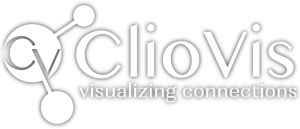Written by: Ana Mairena, ClioVis Intern and University of Texas History and Psychology Major
August 15, 2024.
Who is Sabrina Carpenter?
For many people, the story of Sabrina Carpenter begins in 2021, following the media frenzy generated by a suspected love triangle between herself and fellow musicians Joshua Bassett and Olivia Rodrigo. But long before she was rumored to be “that blonde girl” mentioned in Rodrigo’s song “Driver’s License,” Carpenter was an accomplished actress and singer whose career was already on the rise. She co-starred in her own Disney Channel show, Girl Meets World, for three years and had finalized a record deal at the ripe old age of 14. Five studio albums and several film appearances later, Sabrina is one of the most well-formed and well-branded pop stars of her age.
Follow along with the video case study I made on how I used ClioVis to make a visual timeline of Taylor Swift’s career and further my learning experience in the classroom.
My personal connection to the music
Although the general public is just now waking up to the force that is Sabrina Carpenter, I’ve been aware of her career since she played Maya Hart on the aforementioned Girl Meets World, a spin-off of the ‘90s show Boy Meets World. I was a fan when she released her debut single “Can’t Blame a Girl for Trying” all the way back in 2014, and I’ve watched as she evolved from her Eyes Wide Open era all the way to Short n’ Sweet, which will be her most recent album. For many of her listeners, Carpenter’s recent success isn’t just the work of the past couple years, it’s the culmination of a decade’s worth of fandom. Sabrina has grown up and so have we, right alongside her.
Where the new meets the old – and how ClioVis helps us bridge the gap
Because Sabrina’s career was somewhat of a slow burn to stardom, it can be difficult for people to wrap their heads around her fame. Some argue that she shouldn’t be nominated for Best New Artist at the Grammys this year because she’s about to release her sixth album, which makes it seem like she isn’t very “new,” but others have frequently commented that they hadn’t heard of her at all until recently. Making a ClioVis timeline allows us to see how Sabrina grew into her artistry with each passing album, and how her current fame is the product of her experience as a child star.
Conclusion
A timeline also helps us understand how Sabrina’s career has been connected to and shaped by other celebrities. One of her first major breakthroughs in music was when she placed third in a singing competition hosted by Miley Cyrus. Since then, Sabrina has performed with The Vamps and opened for the likes of Ariana Grande and Taylor Swift. Now a huge artist in her own right, she’s giving a platform to other musicians such as girlhouse, Blu DeTiger, spill tab, and Annika Bennett, who were some of the opening acts on her most recent tour. Tools like ClioVis give users the opportunity to show the development and trajectory of not just their favorite pop stars but the advancement of whatever subject they feel passionate about. Check out another ClioVis timeline about Taylor Swift.
